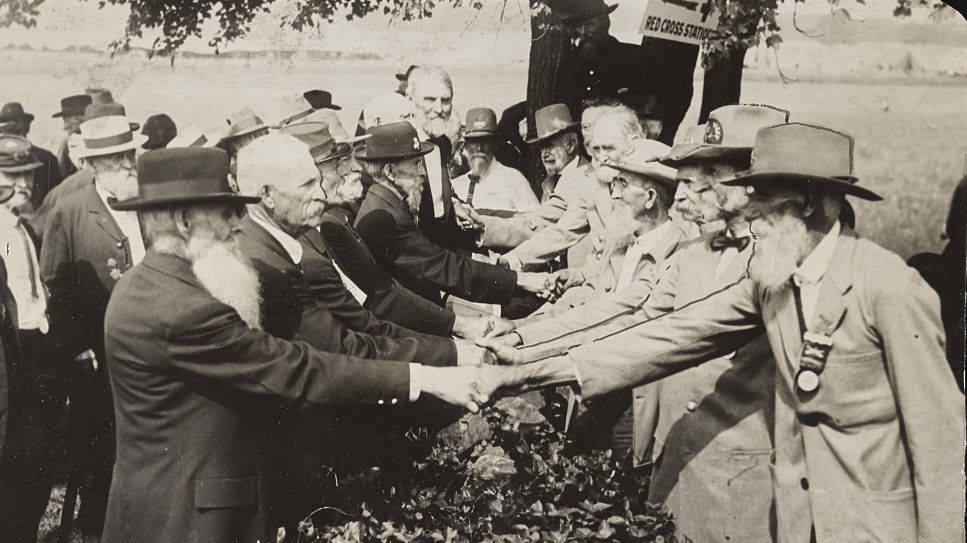Authors:
Historic Era: Era 7: The Emergence of Modern America (1890-1930)
Historic Theme:
Subject:
June/July 1978 | Volume 29, Issue 4


Authors:
Historic Era: Era 7: The Emergence of Modern America (1890-1930)
Historic Theme:
Subject:
June/July 1978 | Volume 29, Issue 4
The most dramatic and tragic moment of the American Civil War was the climactic point of Pickett’s charge at Gettysburg on the afternoon of July 3, 1863. This doomed assault brought the Southern Confederacy to what looked like the verge of triumph, broke up in dust and fire, and put the armies on the road that led inevitably to the surrender field at Appomattox. Nothing in all the war has been written about so exhaustively.
For a slightly different angle, begin with the familiar setting: Union infantry and guns massed on Cemetery Ridge, boiling smoke clouds brimming the shallow valley in front, shadowy movement all along the milewide stretch of woodland on Seminary Ridge a mile to the west — then the smoke drifts away as the bombardment stops, and out on the open ridge step Pickett’s fifteen thousand, lining up with military formality, sunlight glinting from rifle barrels and bayonets as the men dress ranks for the advance. And finally the charge begins, disciplined thousands crossing the open field to meet the disciplined defenders in blue, breaking out at last in the wild, nerve-tingling Rebel yell as they come within close range, and the men in blue level their rifles to shoot them down.…
Before they fire, skip fifty years to July of 1913 to see the conclusion.
![[Union and Confederate veterans shaking hands at reunion to commemorate the 50th anniversary of the battle of Gettysburg]](https://www.americanheritage.com/sites/default/files/inline-images/Civil%20War%20Veterans%20at%20Gettysburg.jpg)
In 1913 the government arranged for a joint North-South commemoration of the battle of Gettysburg. Not all the wounds left by the Civil War had healed entirely — civil wars cut deep — but at least the country had recognized itself as one nation forever more, and 1913 seemed like a good time to make a public demonstration of the fact. So various keepers of documents were called on to supply names and addresses of surviving veterans of the battle, and such veterans as were able and willing to attend were invited to return to Gettysburg at no cost to themselves and see what battlefield and antagonists looked like half a century later.
A big tent city was laid out on the field, complete with hospital tents, doctors, and ambulances — after all, when you hold an outdoor convention of seventy-year-olds with a lot of walking around and a powerful emotional strain, you are apt to have a few casualties — and there were bakeries, kitchens, dining tents, and all manner of conveniences these men had lacked on their first visit to the place. Several thousand veterans showed up.
So did the tourists, who came in swarms, along with the people who make a living by going where tourists are. Among these latter were photographers — what tourist could fail